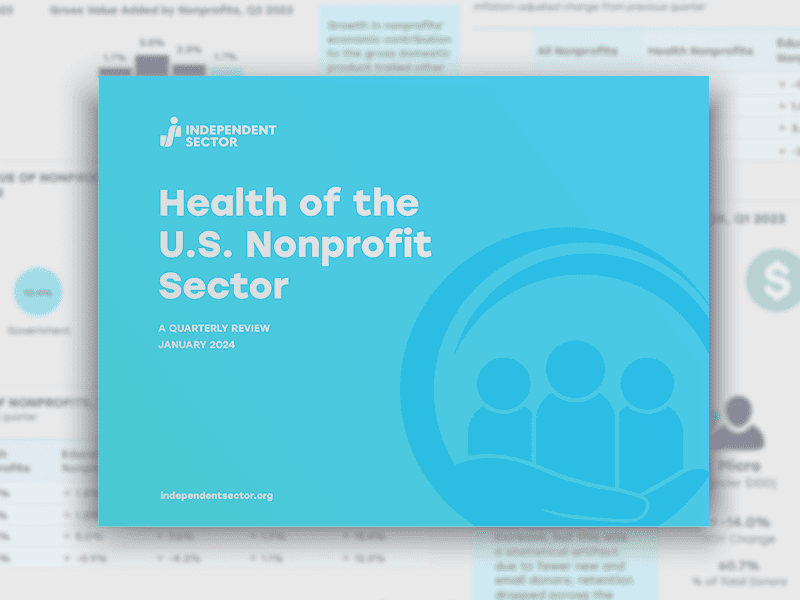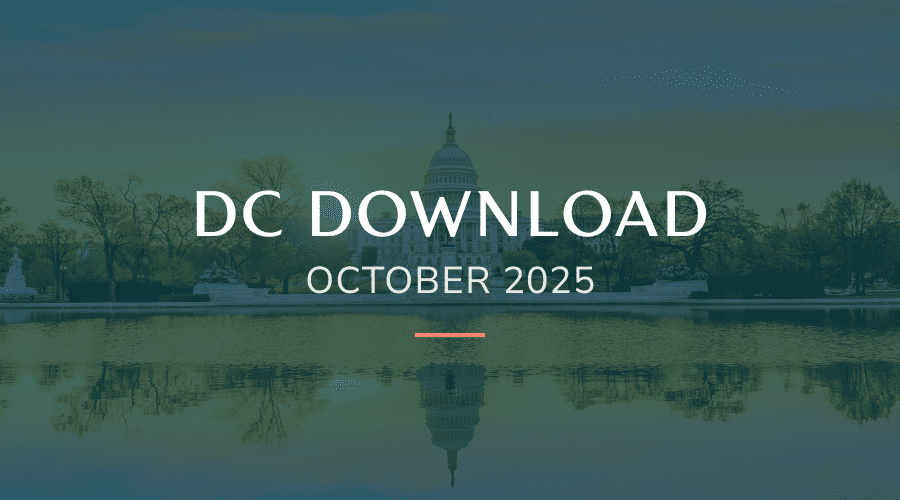We all have changes we would like to see in the world, but we often aren’t sure how to make those changes happen. One way is by joining or donating to community organizations and nonprofit groups that promote social connectedness, provide services, and help neighbors care for each other. And though some nonprofits are hesitant to use their voice to promote public policy change, they and their members, volunteers, and donors can be a part of solving problems and improving lives through advocacy and civic engagement.
Unfortunately, on one key measure of involvement — the number of people making charitable donations to nonprofit organizations — there has been steady decline from the latter half of 2021 through the beginning of 2023 (the most recent data available). Reversing this trend is critical for supporting the work that nonprofits do, as well as keeping individuals involved with organizations that make change and provide services in communities.
Read the latest Health of the U.S. Nonprofit Sector: A Quarterly Review.
Nonprofit Economy and Workforce Remain Steady
The nonprofit sector is a critical component of the American economy, delivering health care, policy change, education, arts, culture, spirituality, community connection, and other vital components of a thriving society. These contributions are undercounted and undervalued in an economy usually measured by gross domestic product. Despite the inherent mismatch between the social value of nonprofit work and the measured dollar value of nonprofit work, nonprofits were estimated to have contributed 5.4% of the American economy in the third quarter of 2023, or about $1.5 trillion per year. This contribution increased by 1.7% from the previous quarter, trailing the economy’s overall growth, which was estimated to have surged by 5.2%.
Though federal data on the nonprofit sector is less available and less frequently updated than data on the for-profit sector, researchers now estimate that the nonprofit sector has regained all jobs lost during the COVID-19 pandemic and has continued to grow, although portions of the nonprofit sector may be recovering more slowly. Nonprofits employed 6.7% of the American workforce in the third quarter of 2023, more than the federal government (2.6%), state governments (4.3%), or local governments (6.0%) when considered separately. Nonprofit employment increased at a rate of 3.2% relative to the previous quarter, faster than either private business or the government sector.
Nonprofit Fundraising Still Decreasing
Despite their critical roles in so many parts of American society, nonprofits remain vulnerable to downturns in charitable giving. In the most recent available data (the first quarter of 2023), individual giving decreased slightly year over year in both dollars (-0.7%) and number of donors (-3.8%). The first quarter of 2023 is the seventh quarter in a row with a decrease in the number of donors; the number of donors to charitable organizations has been falling steadily since the second half of 2021.
One apparent bright spot is that donor retention — donating more than once — seemed to increase slightly (1.3%) year over year in the first quarter of 2023, but this was due to a statistical artifact. Both first-time donors and repeat donors saw drops in retention, but because first-time donors already have low retention rates, and the number of first-time donors dropped, the overall average increased. This is analogous to a school where academic performance worsened across the student body — among the highest-achieving students, among middle-of-the-road students, and among the students struggling most — but the school’s average GPA increased because many struggling students dropped out entirely. Donor retention appeared to increase in the first quarter of 2023 — even as it decreased across all donor types — because fewer first-time donors participated at all.
Policy that Encourages Charitable Giving
Making the decision to give to charitable causes does not happen in a vacuum. One reason that people give to charity is they believe doing so will help them reduce their taxes. Unfortunately, this is currently only true for the 10% of Americans who itemize deductions on their income taxes. For the vast majority of Americans who take the standard deduction, there is no tax incentive to make charitable donations.
Independent Sector, along with the Charitable Giving Coalition, is advocating for a permanent change to tax law to allow taxpayers who take the standard deduction to additionally deduct charitable giving. In 2020, Congress briefly allowed $300 of charitable giving to be deducted from taxable income for taxpayers taking the standard deduction, and evidence suggests that this led to an increase in charitable giving that year. More than 80% of Americans favor making permanent changes to tax law to allow charitable deductions for taxpayers taking the standard deduction.
Though many Americans give to charity despite the lack of tax incentives, the ongoing decrease in charitable giving makes it urgent that we change public policy to incentivize donations to the nonprofit sector. Encouraging charitable giving also creates a stepping stone for first-time donors to learn more about nonprofit organizations and become more involved in their communities through volunteering and activism.
Giving and Volunteering Are Connected
The world around us is always changing, and the way we participate in that change matters. Improving tax laws may not seem like a big change, but encouraging charity and involvement in nonprofits is critical for supporting organizations that provide vital services and support our communities. Research shows that donating to charitable causes is closely related to volunteering — and in-person volunteering has suffered in the COVID-19 era.
Volunteering not only has substantial value in itself for nonprofit organizations but also can increase the likelihood of charitable giving. And encouraging participation via charitable giving can create ripple effects by helping recruit the next generation of volunteers, activists, and leaders, sustaining the ability of the nonprofit sector to make change in the world.
Kevin Miller is Director, Research and Policy Analysis at Independent Sector.



